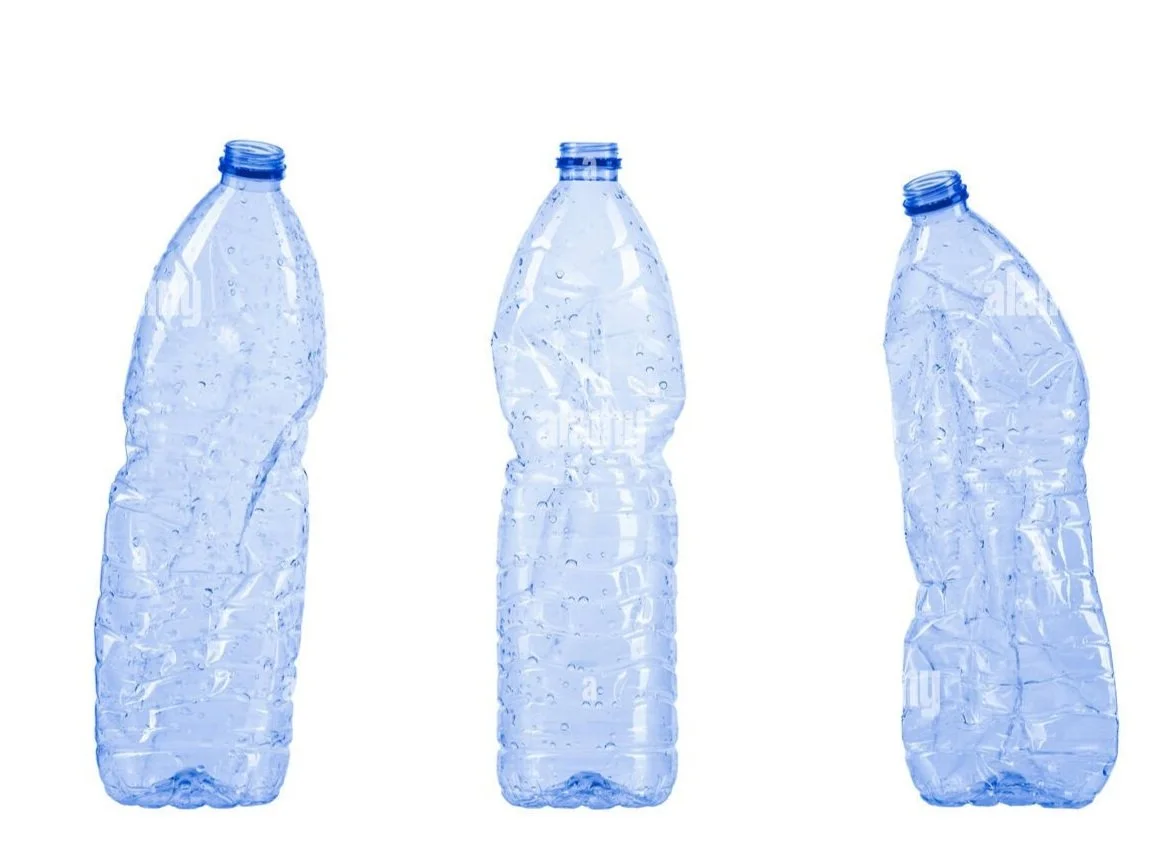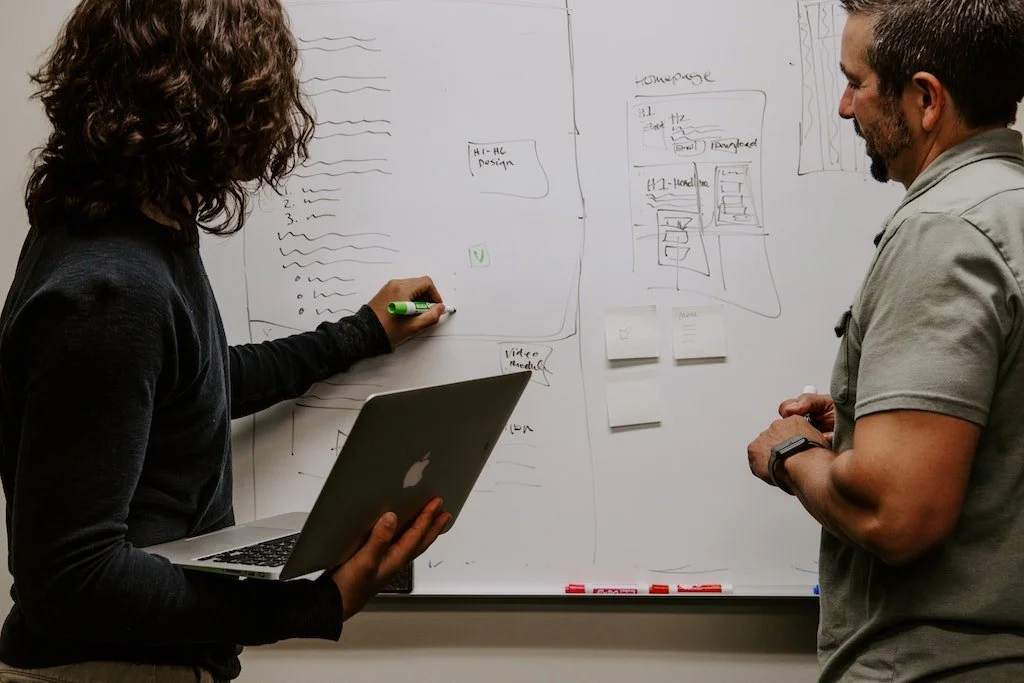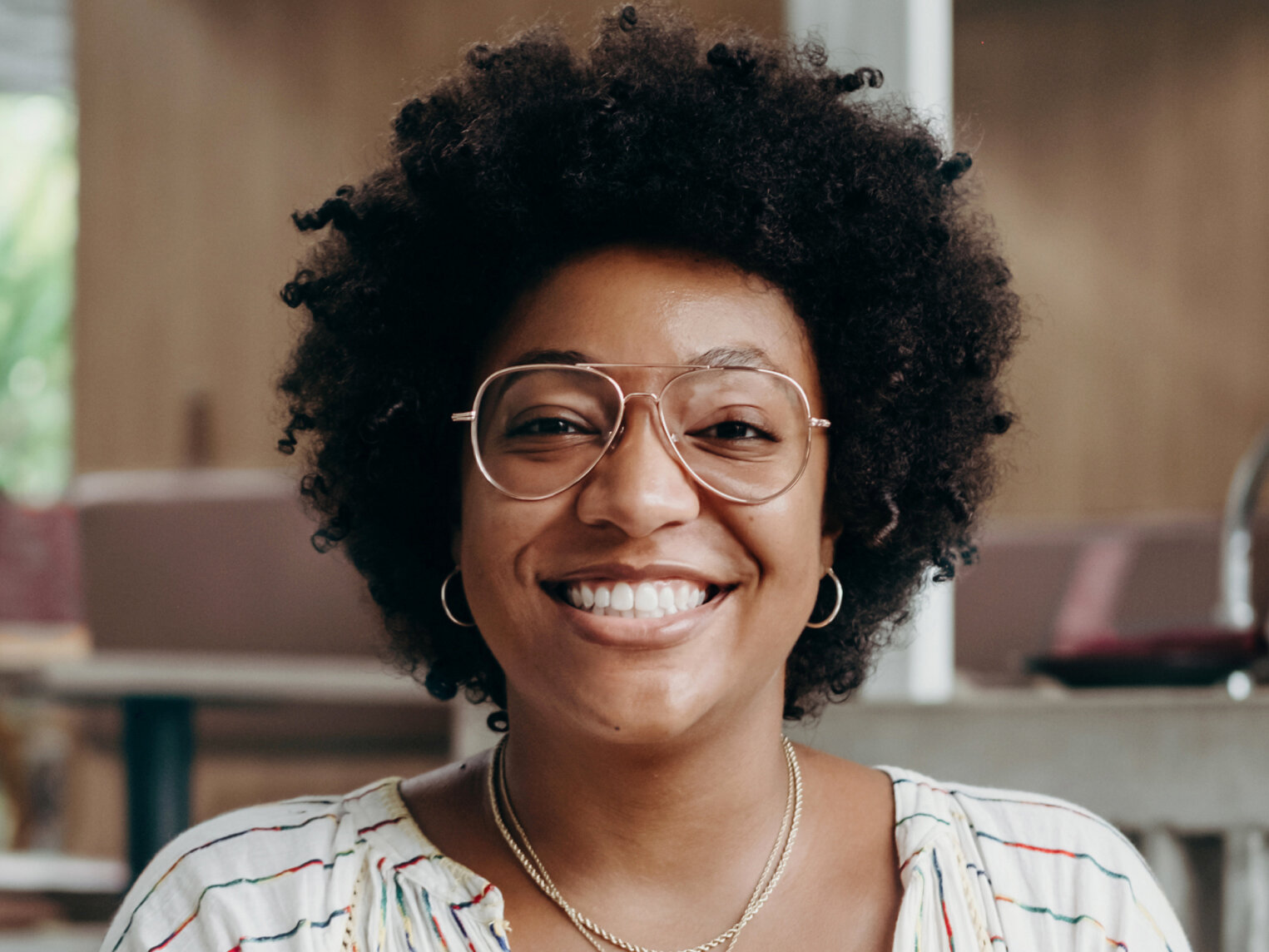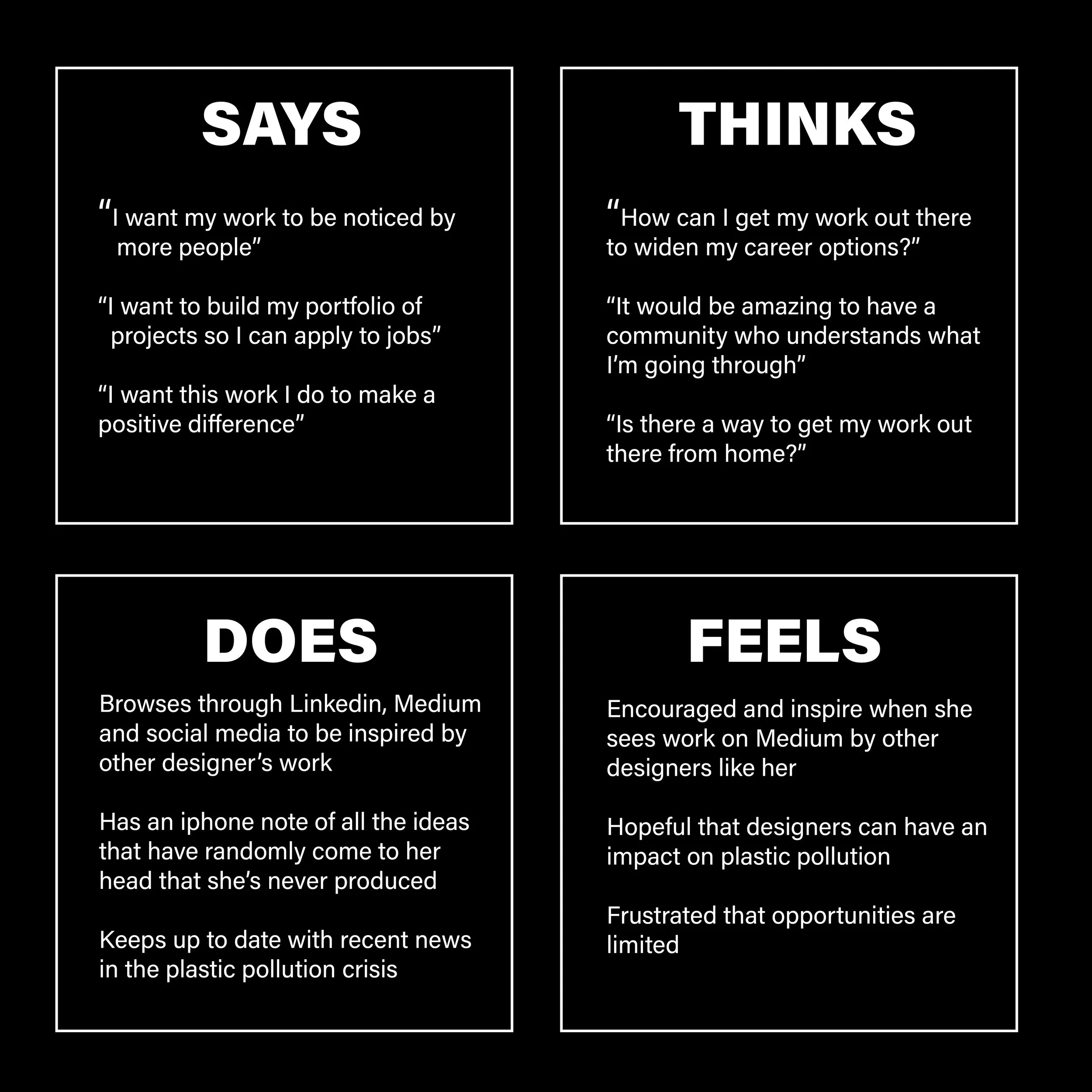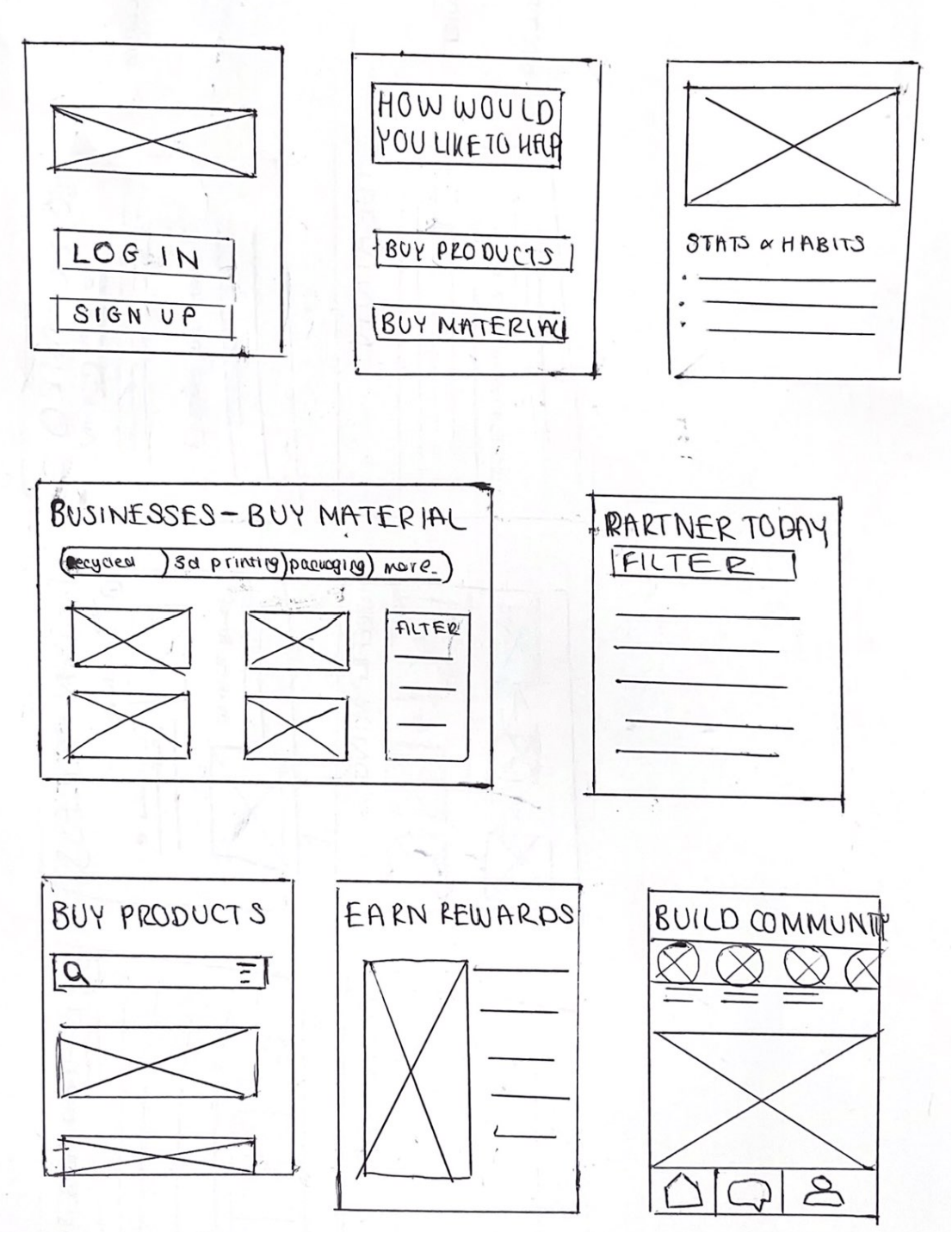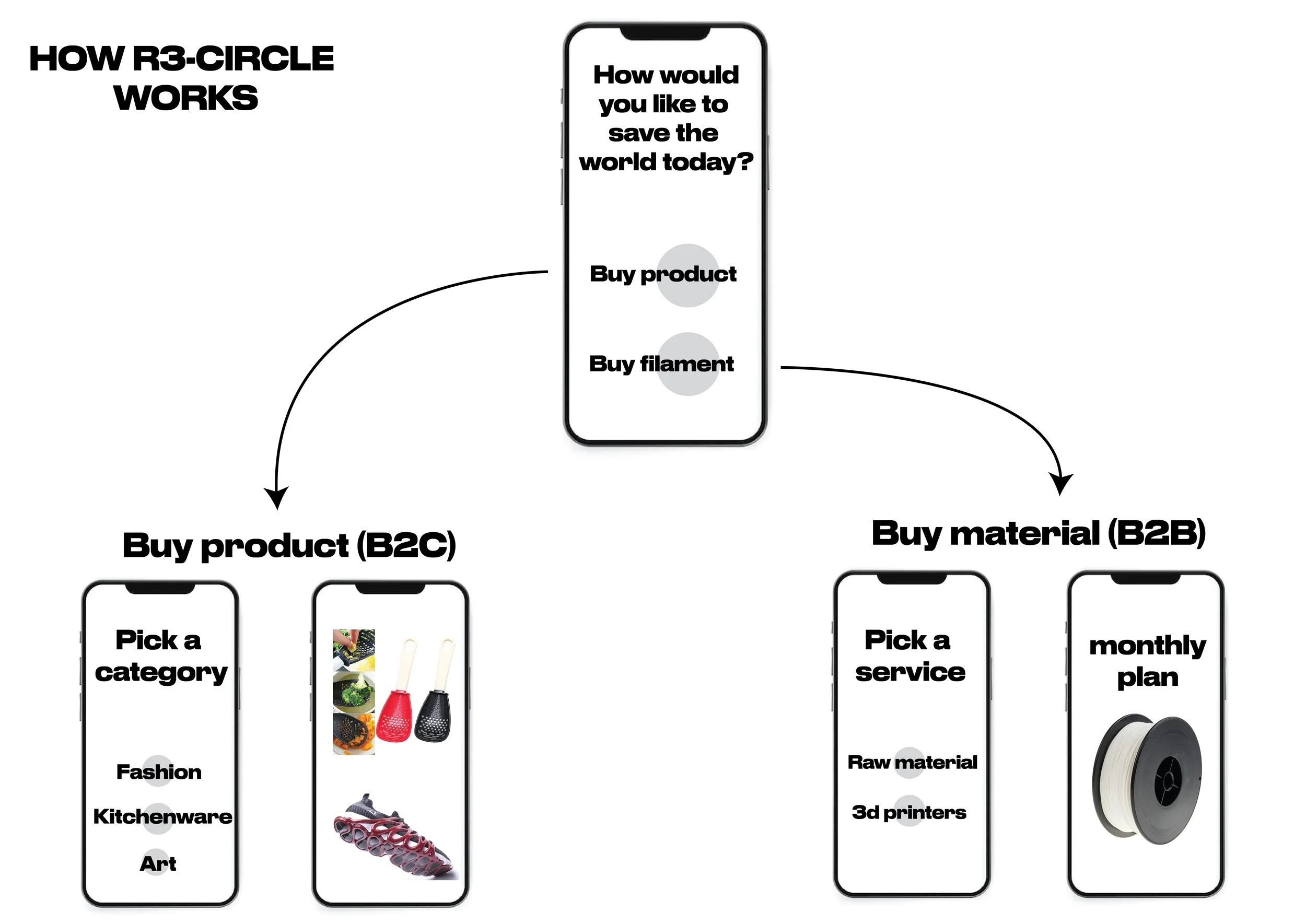Project introduction
On my Master’s programme ‘Innovation and Entrepreneurship’, we were placed into small groups of 5 students from varying disciplines to ideate a business idea. We realised we all had a passion for social enterprise; So we set out to create
an app to reduce plastic waste & create opportunities.
Award won: Best group-work
Grade achieved: 85%
Team size: 3
Project duration: 4 weeks
What’s the problem?
Problem 1: The plastic pollution problem
80% of UK residents are unclear on how exactly to recycle effectively, and do not know what happens to their waste after recycling.
Plastic can only be re-used up to 3 times in the UK before the quality degrades to the degree where it can no longer be used.
Problem 2: The people problem
Young designers, stay at home mother’s, and everybody few and far in between have amazing ideas on creative ways to use old waste.
Despite this, they often lack the platform to either get their ideas out there, or the funding to make them a reality.
The Design process
1
Understanding through empathy
As a group, it was important to gain user research to better understand how everyday household owners treat and view their plastic waste. Additionally, we wanted to gain designers perspectives on their ability to publicise their work.
As there were two designers in the group, it was important to ensure personal bias did not affect the research or final design; so we conducted interviews with one student with a Design background, and one with a business background.
We conducted user interviews on 2 differing groups of individuals:
Regular kitchenware users
Young designers who are intentional to design for sustainability
2
Survey execution & results
Obtaining both qualitative and quantitative data from the interviews was essential to ensure the user journey’s, personas and refined problem statements were well-informed. The following statistics arose from analysing the data and responses:
Designer statistics
67% of our design respondents felt discouraged when they finished a project due to the belief it would never be publicised
80% of design respondents agreed more opportunities need to be created to push sustainable ideas forward
Kitchenware user statistics
71% of respondents have had an idea before about a sustainable product before but never did anything with it
59% stated they would like more opportunities to actively participate in the fight against plastic pollution.
3 - User persona - Designer perspective
Doyin’s goals:
Doyin is an industrial designer who graduated from Birmingham University in 2016. She worked for 6 years as a pharmacist, and realised she wanted to change her career direction as she was passionate about sustainability. Through taking a UX bootcamp course, she was excited to begin to look for opportunities; but everyone was aiming for more relevant experience. Frustrations:
Doyin was upset about this because she knew she had the capabilities to come up with amazing ideas, but struggled to give them a platform. She’s in a space where she wants to build her portfolio, yet still have some reputable backing to confirm that she’s a great designer. She has so many ideas about creative products that can have a huge impact, but she has no idea where to take them. Doyin Bolaji
Age: 32 years old Occupation: Pharmacist Residence: London Living: Alone
Doyin’s empathy map
To further understand Doyin’s feelings and frustrations, an empathy map was created. From the map, it’s evident that she is passionate about design to change careers, but is feeling relatively overwhelmed by discouragement due to the lack of opportunity available as someone who is slightly further along in her career.
User persona - Kitchenware user perspective
Ethan’s goals:
Ethan is a recent graduate from Loughborough University in 2022. He has recently begun a role as a graduate Engineer based in Bristol. Since living in a larger city on his own outside of University, Ethan has been cooking a lot more frequently and has subsequently invested in higher end kitchenware that can last longer. Through living in a larger city, he frequently sees plastic pollution protests in the city centre. Now he's at a life stage where he can purchase his own items, he wants to be more plastic conscious in his new place. Frustrations:
Ethan was frustrated because work teaches him so many practical ways to make the world a better place that he can't put in to practice on his own. He knows the plastic pollution crisis is at an all time high, and frequently sees value in his rubbish at home with a second use, or identifies problems very easily. Often thinking to himself, 'Wouldn't it be cool if this existed', but as he's not a designer the ideas often remain in his head. Ethan Lau
Age: 21 years old Occupation: Engineer Residence: Bristol Living: Shared accomodation
4
Refined problem statement
Every day people seek to contribute unique, creative product ideas to join the fight against plastic pollution, but lack the platform to do so.
Hypothesis statement
If a platform existed that gives every-day people an opportunity to contribute sustainable ideas, with a means to create them, consumers will feel more inspired to aid the fight against plastic pollution.
5
Ideation
App development ideas:
An app that gives people practical small ways to utilise their plastic waste, earning points at their favourite restaurants
An app that gives people creative ways to re-use their plastic waste through taking images of it and letting AI generate new uses
A design challenge app to provide environmental problem statements to young designers who want to build their portfolios
An app that partners restaurants with waste management organisations to better manage their plastic waste
An app connecting environmental designers and investors together
A sustainable product-focused social media platform for people to share experiences and network
An app that allows users to ship rubbish to be made into a 3d printing material
6 - Wireframing - Low fidelity prototype 1
I reached back out to our initial survey respondents to ask them to vote on their top 3 ideas. The top voted idea was a 3d printing platform that allows consumers to purchase products, and businesses to purchase sustainable material.
I created some paper wireframes to provide a structure for the digital designs, and to map out the potential features and layout on the app.
Low fidelity Prototype 2
I started off with this basic design that had significant room for improvement. Although it in-cooperated the highest voted features, the functionality of the app was relatively simple and lacked the disruptive innovation the food industry needed. So I wanted to add a brand identity, and an additional feature that could help users to not only build community, but to challenge them to think more sustainably.
High fidelity Prototype
This developed design has significantly more features that address the original pain points and empathy map. We refined our market by specifically targeting kitchenware, as that is where most plastic waste takes place in the home. Consumers still have the option to ship us their rubbish to allow us to 3D print custom made higher-end kitchen ware. This would be proudly displayed in their kitchen to act as a firm reminder to treat plastic waste responsibly.
